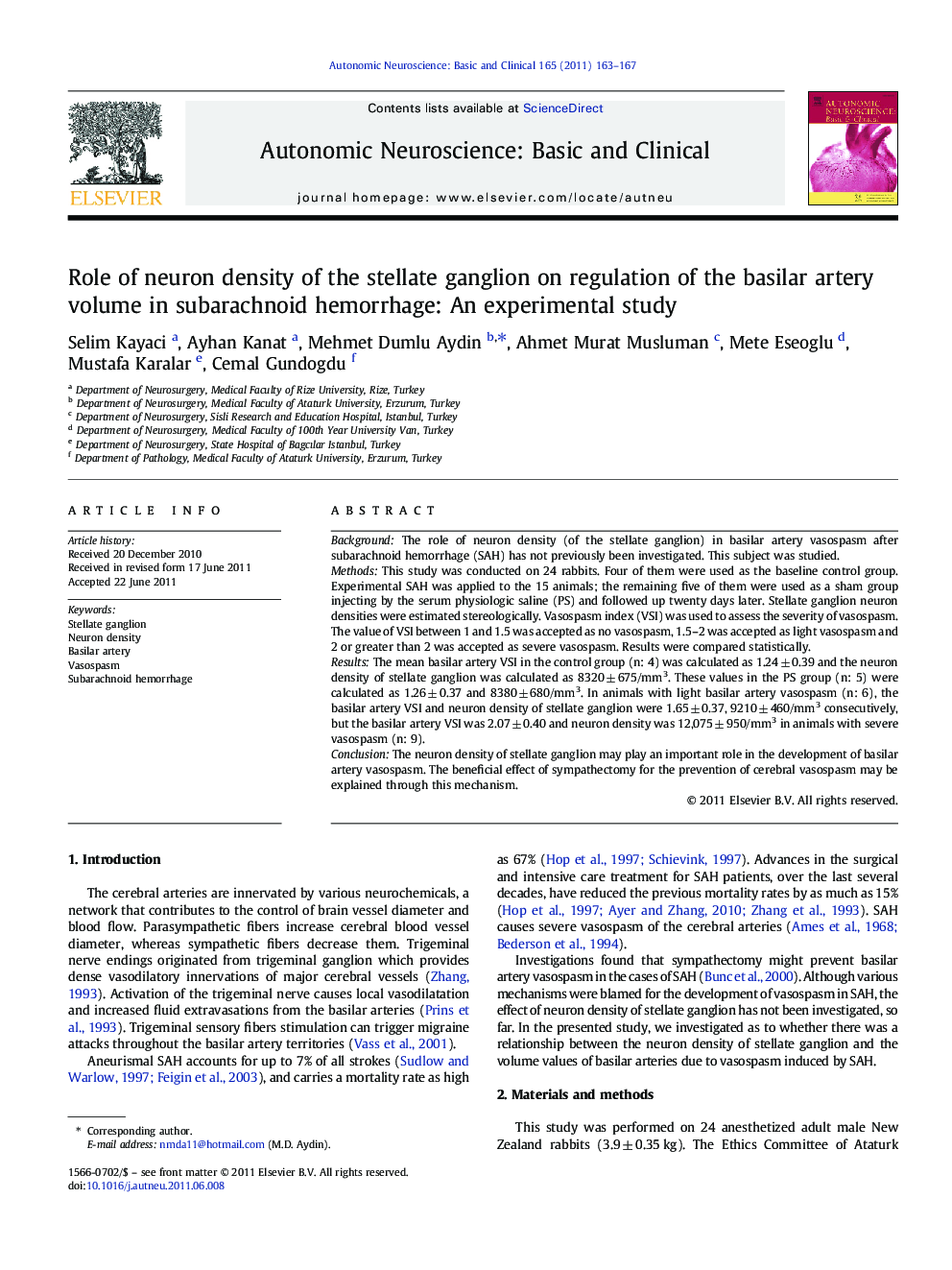| Article ID | Journal | Published Year | Pages | File Type |
|---|---|---|---|---|
| 6004669 | Autonomic Neuroscience | 2011 | 5 Pages |
BackgroundThe role of neuron density (of the stellate ganglion) in basilar artery vasospasm after subarachnoid hemorrhage (SAH) has not previously been investigated. This subject was studied.MethodsThis study was conducted on 24 rabbits. Four of them were used as the baseline control group. Experimental SAH was applied to the 15 animals; the remaining five of them were used as a sham group injecting by the serum physiologic saline (PS) and followed up twenty days later. Stellate ganglion neuron densities were estimated stereologically. Vasospasm index (VSI) was used to assess the severity of vasospasm. The value of VSI between 1 and 1.5 was accepted as no vasospasm, 1.5-2 was accepted as light vasospasm and 2 or greater than 2 was accepted as severe vasospasm. Results were compared statistically.ResultsThe mean basilar artery VSI in the control group (n: 4) was calculated as 1.24 ± 0.39 and the neuron density of stellate ganglion was calculated as 8320 ± 675/mm3. These values in the PS group (n: 5) were calculated as 1.26 ± 0.37 and 8380 ± 680/mm3. In animals with light basilar artery vasospasm (n: 6), the basilar artery VSI and neuron density of stellate ganglion were 1.65 ± 0.37, 9210 ± 460/mm3 consecutively, but the basilar artery VSI was 2.07 ± 0.40 and neuron density was 12,075 ± 950/mm3 in animals with severe vasospasm (n: 9).ConclusionThe neuron density of stellate ganglion may play an important role in the development of basilar artery vasospasm. The beneficial effect of sympathectomy for the prevention of cerebral vasospasm may be explained through this mechanism.
